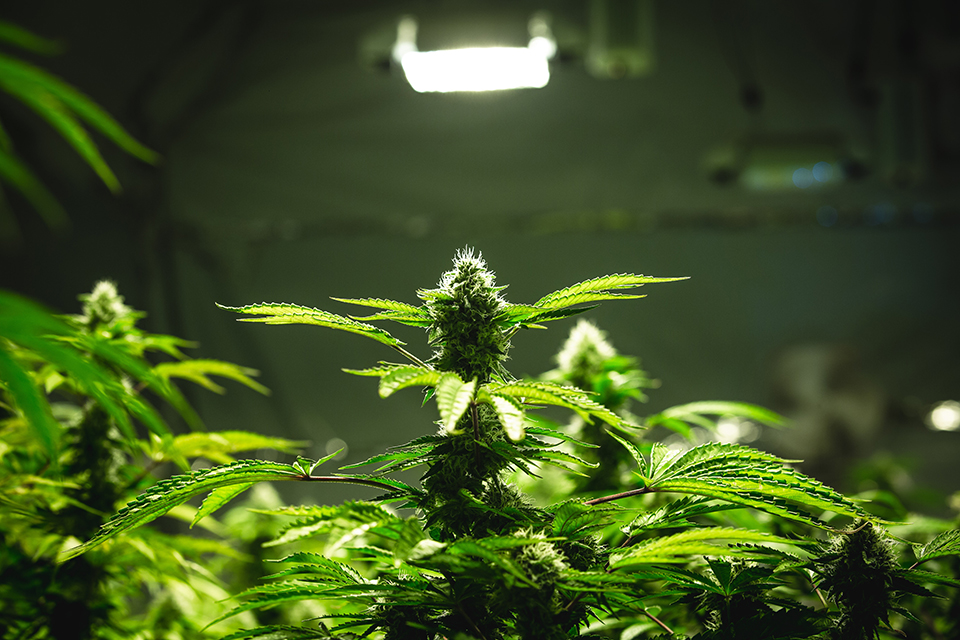
For cannabis cultivators, mastering photosynthesis is necessary for boosting plant health and yield. Learn all about photosynthesis, a vital part of your cannabis plants' growth cycle. By understanding how light influences plant development, you can create optimal growing conditions and enhance your cultivation efforts.
Overview of Photosynthesis in Cannabis
Photosynthesis is critical for cannabis plants, transforming light into the chemical energy they need to thrive. This process unfolds in two stages: the light phase and the dark phase. For cultivators, understanding these stages is paramount to boosting plant health and yield.
The light phase is particularly crucial. Here, light energy is captured and converted into ATP and NADPH, essential for powering the next stage. While both phases are important, the light phase sets the groundwork for effective photosynthesis.
By focusing on the light phase, growers can learn how to optimize light conditions to improve plant growth. This phase's efficiency directly influences the overall success of photosynthesis, impacting the growth and productivity of cannabis plants.
The Light Phase of Photosynthesis
In the light phase of photosynthesis, cannabis plants convert light into the energy they need to grow. This process takes place in the chloroplasts, where chlorophyll, the green pigment, is key. Chlorophyll absorbs light, especially in the blue and red wavelengths, and starts turning it into chemical energy.
When chlorophyll absorbs photons, it excites electrons, which then move through proteins in the thylakoid membrane, known as the electron transport chain. This electron movement results in the creation of ATP and NADPH, crucial energy carriers for the next stage of photosynthesis.
For cultivators, understanding this phase is about more than just light absorption; it's about ensuring light is converted efficiently into energy. This efficiency is vital for the plant's health and growth. Providing the right light intensity and spectrum is essential for maximizing energy absorption and conversion.
Chlorophyll's role in capturing light energy is indispensable. Without it, the plant couldn't generate the energy needed for development. Therefore, optimizing the light phase with proper lighting conditions is crucial for successful cannabis cultivation.
The Role of Light in Cannabis Growth
Light is necessary for cannabis growth, influencing photosynthesis and plant development. Cultivators need to grasp how light spectrum and intensity affect the light phase of photosynthesis to optimize their setups.
The light spectrum includes various wavelengths that plants use for photosynthesis. Cannabis plants respond well to blue and red light. Blue light, found in the 400-500 nanometer range, is essential during the vegetative stage, promoting strong leaf and stem growth. Red light, between 600-700 nanometers, is pivotal during flowering, aiding in bud development.
Different lighting systems impact the light phase differently. LED lights offer adjustable spectrums, allowing growers to customize light conditions to suit their plants' needs, potentially improving energy efficiency and yields. High-Pressure Sodium (HPS) lights emit a red-rich spectrum, making them effective during flowering.
Light intensity, or how much light reaches the plant, is also fundamental. Too little light can result in weak plants with lower yields, while excessive light can cause damage. Growers should find the right balance by adjusting light distance and ensuring even distribution across the plant canopy.
Understanding light's role in cannabis growth means more than just providing light. It involves strategically managing light spectrum and intensity to match the plant's growth stage, enhancing the light phase's efficiency and boosting plant health and productivity.
Key Processes During the Light Phase
In the light phase of photosynthesis, cannabis plants undergo essential processes that fuel their growth. One key process is photolysis, where water molecules split within the chloroplasts' thylakoid membranes, releasing oxygen. This oxygen is requisite for the plant's respiration and adds to the atmospheric oxygen we all rely on.
Another integral process is the creation of ATP and NADPH, which are energy carriers. ATP powers cellular activities, while NADPH provides the reducing power for carbon fixation in the next phase. These molecules are indispensable for the plant's metabolism, driving the synthesis of sugars and other compounds necessary for growth.
For cultivators, understanding these processes is unavoidable if you want success. By ensuring plants receive the right amount of light, growers can enhance these energy conversions, leading to healthier plants and potentially better yields. Mastering the light phase helps create the ideal conditions for photosynthesis, ensuring cannabis plants have the energy and resources they need throughout their growth cycle.
Optimizing the Light Phase
Creating the right lighting environment helps cultivators boost photosynthesis and plant growth. Managing the light cycle is an integral part of this. During the vegetative stage, an 18/6 light schedule—18 hours of light followed by 6 hours of darkness—mimics long summer days and encourages strong growth. As plants move to the flowering stage, switching to a 12/12 light cycle can trigger flowering by simulating shorter autumn days.
The choice of lighting also makes a significant difference. LED lights are favored for their energy efficiency and ability to adjust the light spectrum to match different growth stages. This flexibility can enhance the light phase's effectiveness. High-Pressure Sodium (HPS) lights, known for their red-rich spectrum, are particularly effective during the flowering stage despite being less energy-efficient.
Light intensity is another critical factor. Ensuring the right intensity helps plants absorb enough energy for photosynthesis without experiencing stress. Adjusting the distance between the lights and the plant canopy can prevent issues like light burn or stunted growth.
Troubleshooting Common Light Phase Issues
Even with a well-planned setup, cultivators can face challenges during the light phase of photosynthesis. Spotting these issues early can save your plants from long-term harm and keep them growing strong. A frequent problem is insufficient light exposure, which can cause slow growth, pale leaves, and lower yields. This often happens when the light intensity is too low or the spectrum doesn't match the plant's growth stage. To fix this, check your light positioning and consider boosting intensity or adjusting the spectrum to better suit your plants.
Light burn is another concern, especially with high-intensity lights. Signs include leaf discoloration, curling, and crispy edges. To avoid this, keep a safe distance between lights and the plant canopy and use light meters to ensure the right intensity.
Issues with light spectrum can also impact plant health. If cannabis plants lack blue light during the vegetative stage or red light during flowering, they may not grow as well. Adjustable LED systems can help customize the light spectrum to meet your plants' needs throughout their growth.
Master the Light Phase for a Better Yield
Understanding the light phase of photosynthesis is critical for cultivators who want to boost plant health and yields. Mastering this phase allows growers to fine-tune light conditions, ensuring plants get the energy needed for robust growth. The light phase is fundamental to photosynthesis, converting light into chemical energy that fuels plant development. By applying these learned insights, cultivators can improve their cultivation techniques.






